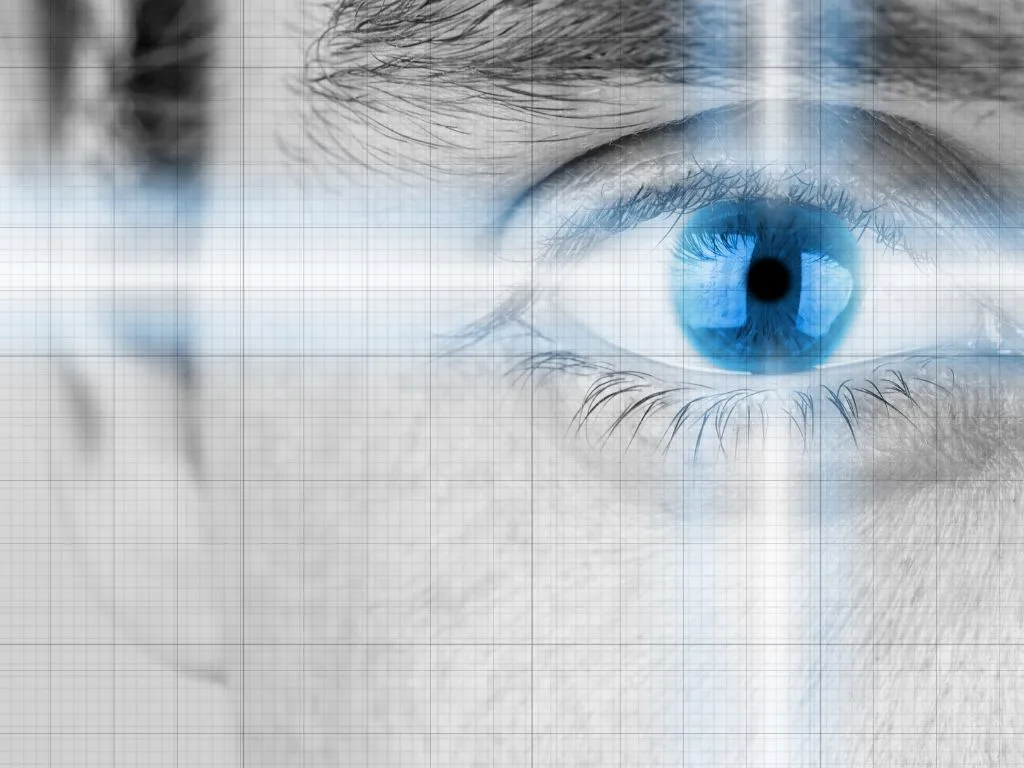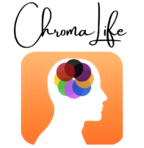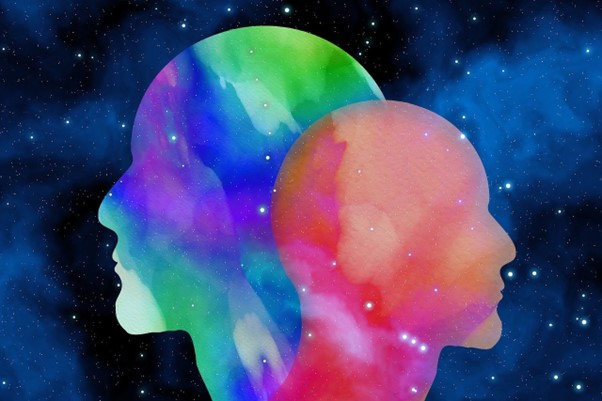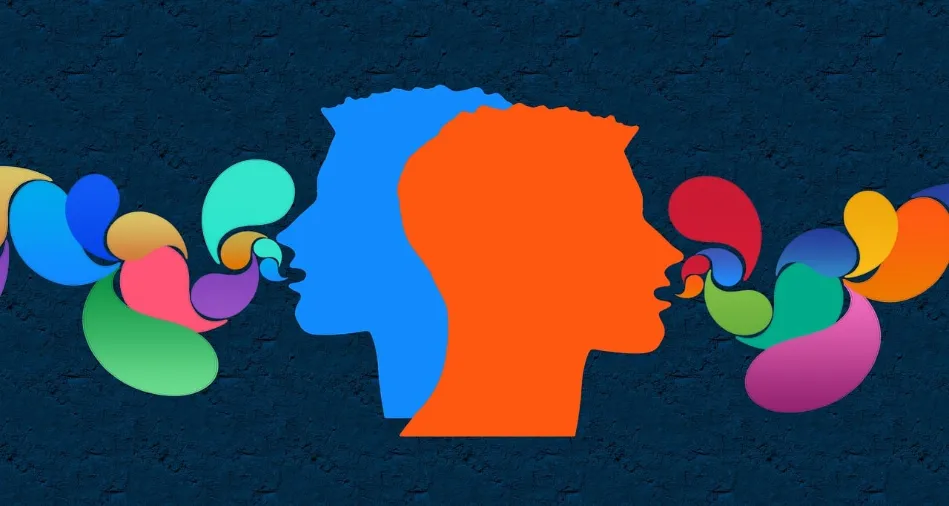[read-time]

The concept of personality color traits is rooted in the idea that individuals can be categorized based on the colors that resonate with their behavior, attitudes, and emotions. This framework is often associated with psychological theories that seek to break down complex human characteristics into more digestible forms.
The concept of categorizing personality traits dates back thousands of years to the time of Hippocrates and his Four Temperament Theory. You’ll learn more about these in our color assessment eBook.
Colors such as red, blue, green, and yellow correspond to different personality traits. For instance, red is often associated with energy and passion, while blue is linked to calmness and stability. Each color scheme offers insights into how individuals may react to their environment and interact with others. Understanding these color traits can provide valuable context for personal relationships, helping individuals develop a harmonious blend of interpersonal interactions.
The importance of recognizing personality color traits lies in their potential to enhance communication and foster empathy. By identifying and acknowledging the predominant colors in ourselves and others, we can better navigate various social dynamics.
This awareness allows for a more tailored communication approach, promoting understanding and mitigating conflicts. Furthermore, grasping the essence of different personality color traits aids in personal development, enhancing one’s ability to relate to others effectively. Such comprehension is vital in everyday interactions, whether in personal relationships, workplace environments, or community engagements.
Overall, the study of personality color traits serves as a useful tool for cultivating stronger, more meaningful connections with those around us.
Emophilia and Personality Color Traits: The Fascinating Connection Between Them
[read-time] Emophilia meaning: What is it and what does it mean? Emophilia, a term derived from the Greek word “emophilia,” meaning “love…
The Personality Color Assessment & The OCEAN Model (Big 5
[read-time] This article delves into how our personality color assessment aligns with the OCEAN Model – The Big 5 Personality Traits…
Personality Color Assessment – What Exactly is it and Why
In this article you’ll learn 5 vital benefits of personality color assessments!…
The 5 Love Languages & The Color Assessment: The Real
[read-time] Table of ContentsThe Rainbow of the Personality Color AssessmentA Groundbreaking ConceptThe Five Love Languages: A Universal Blueprint for ConnectionThe Enduring…
Welcome to the ChromaLife Blog!
[read-time] Welcome to the ChromaLife Personality Color Assessment blog: where every hue tells a story! Are you ready to dive into the…
Neuroticism – Your Personality Is Making You Exhausted! Learn The
[read-time] Personality psychology, Neuroticism and the impact on energy levels One of the key personality traits that significantly influences energy levels is…
5 Effortless Keys to Effective Communication: The Power of Your
[read-time] Effective communication is the cornerstone of successful personal and professional relationships. Whether you’re navigating a delicate interpersonal situation, leading a…
The Big Five Personality Traits – 5 Intriguing Gender Differences
[read-time] Gender differences in personality traits The Big Five personality Traits and Gender differences in personality trait have often sparked countless debates…
Family Relationships: 11 Powerful Ways Your Personality Colors Can Impact
We’ll uncover the surprising influence your personality color has on your family relationships and explore five powerful ways it shapes…
The Importance of Recognizing Personality Traits
Understanding personality color traits in others plays a vital role in fostering meaningful connections. Each individual inherently exhibits unique characteristics that influence their behavior, communication styles, and preferences. By recognizing these traits, one can significantly enhance interpersonal dynamics—be it in professional environments or personal relationships.
One of the primary benefits of identifying personality color traits is improved communication. Each color represents distinct ways of thinking and expressing oneself. For instance, a person characterized by the color red may exhibit assertiveness, while one with a blue personality might prioritize harmony and details. When individuals understand these traits, they can tailor their communication strategies accordingly, ensuring their messages are conveyed in ways that resonate with others. This heightened awareness can minimize conflicts and misunderstandings, paving the way for clearer and more effective dialogues.
Moreover, recognizing these traits is essential for cultivating effective teamwork. In collaborative settings, every team member brings their unique strengths and weaknesses, influenced by their personality colors. By identifying these traits, one can foster an environment where each individual’s contribution is maximized. For example, a yellow personality might excel in generating creative ideas, while a green personality may focus on maintaining team cohesion. Acknowledging these differences allows teams to allocate tasks that align with each member’s inherent strengths, thereby enhancing overall productivity and morale.
Furthermore, understanding personality color traits can lead to stronger personal relationships. By appreciating the underlying motivations and behaviors of friends or family, individuals can foster empathy and trust. This deeper comprehension encourages more profound emotional connections and promotes a supportive network. Consequently, recognizing and valuing personality traits not only enriches communication and teamwork but also serves as a foundation for building resilient and fulfilling relationships.
Overview of the Color Personality Model
The Color Personality Model is a framework that categorizes individuals into distinct personality types based on four primary colors: red, blue, yellow, and green. Each color represents a set of traits that can provide insight into a person’s behavior, motivations, and interpersonal dynamics. Understanding these personality types can aid in enhancing communication and fostering stronger relationships.
Individuals categorized as red are often seen as assertive, ambitious, and competitive. They tend to be natural leaders who are driven by results and are often focused on achieving goals. Red personalities can exhibit a strong-willed nature, which can be both motivating and intimidating to others. Their boldness often allows them to take charge, but it may also lead to challenges in collaborative situations where compromise is necessary.
On the other hand, blue personalities are typically analytical, detail-oriented, and methodical. They value logic and professionalism, and their approach to problem-solving tends to be systematic. Blue individuals often seek stability and prefer to maintain structure in their lives, which can reflect in their relationships as they prioritize reliability and trustworthiness.
Yellow personalities are characterized by their optimism, enthusiasm, and social nature. They are often seen as the life of the party, bringing energy and warmth into their interactions. While they are generally positive, their need for social engagement can sometimes make them seem distractible or less detail-focused compared to their red and blue counterparts.
Finally, green personalities are identified by their empathetic and nurturing qualities. They value harmony and are often seen as peacemakers in social settings. Their tendency to seek consensus can contribute significantly to maintaining positive relationships, though it may also lead to challenges when faced with conflict or the need for assertiveness.
Tip 1: Observe Actions and Reactions
Identifying personality color traits in others begins with keen observation of their actions and reactions in various scenarios. Behavioral cues often serve as windows into a person’s underlying personality, allowing us to glean insights into their character. For example, when faced with a stressful situation, a person displaying calmness and rational decision-making may indicate a blue personality, characterized by a desire for peace and order. Conversely, an individual who becomes animated and seeks immediate solutions might embody a red personality, driven by a strong sense of urgency and leadership.
Moreover, paying attention to how individuals respond to feedback can be highly informative. A person who gracefully accepts constructive criticism and uses it as a tool for personal growth might exhibit green personality traits, denoting a strong sense of empathy and cooperation. In contrast, someone who reacts defensively could reflect a yellow personality, which tends to emphasize individuality and self-expression, possibly leading to resistance when challenged.
Environmental context also plays a crucial role in shaping reactions. Observing behavior in group settings, such as team meetings or social gatherings, can reveal a wealth of information. For instance, those who foster collaboration and encourage others to share their ideas likely belong to the green or yellow spectrum, whereas individuals who confidently assert their own opinions may lean more towards the red spectrum. Additionally, nonverbal cues, such as eye contact, body language, and facial expressions, can provide valuable insights into a person’s emotional stability, assertiveness, and adaptability—traits aligned with their personality colors.
In summary, by attentively observing the actions and reactions of others in various situations, we can begin to identify their personality color traits. This understanding can ultimately foster stronger relationships, as it allows us to communicate more effectively and empathetically with individuals across different personality types.
Tip 2: Listen to Communication Styles
Understanding an individual’s communication style is a crucial component in identifying their personality color traits. Communication extends beyond mere words; it encompasses a spectrum of verbal and non-verbal cues that can reveal significant insights into a person’s character. By observing how people express themselves, you can glean deeper understanding of their personality colors.
Verbal communication often includes tone of voice, choice of words, and the structure of sentences. For instance, someone who speaks in a direct, assertive manner may be exhibiting traits associated with a strong personality color, such as red. On the other hand, individuals who opt for a softer, more diplomatic approach may align with traits commonly found in yellow or green personality types. Analyzing these verbal cues can help you identify specific characteristics linked to these personality colors.
Non-verbal communication is equally revealing. Body language, facial expressions, and eye contact contribute significantly to the overall message being communicated. For example, an individual who maintains steady eye contact may suggest confidence and openness, potentially indicating a blue personality type. Conversely, someone who frequently shifts their gaze or displays closed body language might reflect feelings of discomfort or unease, possibly aligned with traits related to the orange personality color.
Moreover, understanding these communication styles involves active listening. It is imperative to focus not only on what is being said but also how it is being said. Pay attention to the context, tone, and non-verbal signals as they often reveal underlying motivations and feelings, which are fundamental in deciphering personality color traits. By cultivating an awareness of how diverse communication styles manifest in others, you can foster stronger, more empathetic relationships built on mutual understanding.
Tip 3: Analyze Emotional Responses
Emotional responses play a pivotal role in understanding personality color traits in individuals. These responses can reveal essential insights into a person’s character, motivations, and interpersonal dynamics. By observing how someone reacts emotionally in different circumstances, we can discern patterns that align with particular personality colors, thus enhancing our ability to foster deeper connections.
Each personality color corresponds to distinct emotional triggers and responses. For instance, individuals with a dominant red personality may exhibit assertiveness, enthusiasm, or impatience, particularly when their goals are at stake. Conversely, those with a blue personality tend to respond with sensitivity and a desire for emotional reassurance, especially in conflict situations. By recognizing these emotional cues, one can accurately assess the underlying personality color traits influencing a person’s behavior.
To analyze emotional responses, consider the context and intensity of the reactions. For example, note an individual’s level of passion when discussing subjects they feel strongly about. Are they fervent and animated, or do they maintain a calm demeanor? This assessment can guide you in interpreting whether the person leans towards the warm and expressive aspects of a yellow personality, or perhaps the more reserved nature of a green personality, who may prioritize harmony and connection over self-assertion.
Furthermore, pay attention to how individuals respond to challenges. Do they display frustration and a sense of urgency, or do they remain composed and diplomatic? Such responses not only reveal personality color traits but also highlight areas where empathy and support might be beneficial. Understanding these emotional dynamics fosters compassion, helping to bridge gaps in communication and reinforcing interpersonal relationships.
In essence, by analyzing emotional responses, one can arrive at a more comprehensive perspective on the personality traits of others. This understanding equips us with the tools to connect on a deeper level, paving the way for stronger, more meaningful relationships.
Tip 4: Note Social Preferences
Understanding the social preferences of individuals is crucial for fostering stronger relationships. Personality color theory suggests that different colors represent specific traits and tendencies that influence how individuals interact with others. For instance, a person who identifies with the blue personality color may prioritize deep connections and emotional exchanges, often thriving in one-on-one interactions. They tend to seek meaningful conversations and may feel overwhelmed in large social gatherings.
Conversely, individuals associated with the yellow personality color often flourish in social settings filled with energy and activity. They enjoy being the center of attention and require stimuli from their surroundings to feel engaged. Their extroverted nature allows them to navigate group dynamics easily, making them adept at forming new connections quickly. Recognizing these tendencies can help in tailoring interactions that resonate with their preferred modes of engagement.
Additionally, green personality types typically prefer harmonious and peaceful environments. They are generally more introverted, finding solace in solitude or small, trusted groups rather than large crowds. In such instances, respecting their need for quiet time can enhance mutual understanding and strengthen relationships over time. Similarly, red personalities are often assertive and thrive on competition and teamwork, indicating a preference for dynamic group settings where they can take charge and motivate others.
By observing these social preferences and understanding the personality color traits linked to them, you can engage more effectively with others. Whether it is providing an opportunity for intimate conversations or creating vibrant group activities, recognizing these dynamics can help establish a more comfortable and productive rapport with various individuals.
Tip 5: Reflect on Your Own Traits
Understanding your own personality color traits is an essential step toward building deeper and more meaningful relationships with others. Self-awareness plays a crucial role in interpersonal interactions since it allows individuals to recognize their strengths, weaknesses, and how these traits influence their behavior and reactions. By reflecting on your own color traits, you not only gain insights into yourself but also create a pathway to empathize with the traits of those around you.
To begin this journey of self-reflection, consider assessing your dominant personality color. Various personality assessments can aid in identifying these traits, highlighting aspects such as whether you lean towards being organized and detail-oriented, which is often characteristic of blue traits, or if you tend to be more spontaneous and energetic, akin to the yellow personality. Engaging in this type of exploration can lead to significant personal growth.
Once you identify your personality color, take time to think about how your traits affect your interactions. Recognizing that your traits may sometimes clash with others can provide valuable insight into communication barriers or conflicts. For example, if you often display red traits, characterized by assertiveness and a need for control, you might find it challenging to work harmoniously with someone exhibiting more laid-back or green qualities. By approaching relationships with this awareness, you can foster tolerance and flexibility in interactions.
Documenting these reflections in a journal can also be beneficial. Regularly writing about your thoughts and feelings regarding your personality traits can not only clarify your self-image but also highlight how you perceive and respond to others’ traits. Ultimately, this understanding allows for more strategic communication and a more empathetic approach, leading to stronger, more harmonious relationships based on mutual respect and knowledge.
The Takeaway
Building Stronger Relationships through Color Awareness
Understanding personality color traits serves as a powerful tool in fostering deeper connections with others. The insights gained from recognizing these traits can significantly enhance everyday interactions, making relationships more harmonious and effective. By identifying whether individuals lean towards Red, Blue, Yellow, or Green color personalities, one can better navigate the complexities of interpersonal dynamics.
The five tips discussed in this article provide practical guidance for recognizing these traits in others. Firstly, observing behavior and communication styles can reveal a person’s primary color trait, allowing for tailored responses to their needs. Secondly, asking open-ended questions facilitates a deeper understanding of an individual’s motivations and preferences, essential for building rapport. Thirdly, practicing active listening strengthens relationships by demonstrating genuine interest in the perspectives of others. Fourthly, recognizing emotional cues can identify stress responses tied to specific color traits, thereby improving emotional intelligence in interactions. Finally, applying flexibility in our communication approaches based on others’ color personalities creates a more supportive and responsive environment.
By implementing these strategies, readers can cultivate stronger relationships both personally and professionally. A constructive approach to understanding personality traits not only enables improved collaboration but also enriches social interactions. As individuals embrace color awareness, they find common ground and enhance mutual respect and understanding. Thus, the application of these insights can lead to more fulfilling relationships characterized by empathy and cooperation.
In conclusion, investing time and effort into identifying personality color traits is a step toward enriched engagement and meaningful connections, establishing a foundation for successful and lasting relationships.
- 8 Morning Habits of Highly Successful People You Can Adopt Today
- Are Personality Changes Possible? The Science Says Yes
- The Hidden Dangers of Flow State: 2 Warning Signs You’re Trapped
- Discover the Magic of Mirror Neurons! Stop Missing Out on Deeper Connections: 7 Connections You’re Probably Oblivious To
- The Domino Effect in psychology refers to the cascading impact of one behavior, thought, or action leading to a chain reaction of subsequent related outcomes.
Emophilia and Personality Color Traits: The Fascinating Connection Between Them
[read-time] Emophilia meaning: What is it and what does it mean? Emophilia, a term derived from the Greek word “emophilia,” meaning “love…
The Personality Color Assessment & The OCEAN Model (Big 5
[read-time] This article delves into how our personality color assessment aligns with the OCEAN Model – The Big 5 Personality Traits…
Personality Color Assessment – What Exactly is it and Why
In this article you’ll learn 5 vital benefits of personality color assessments!…
The 5 Love Languages & The Color Assessment: The Real
[read-time] Table of ContentsThe Rainbow of the Personality Color AssessmentA Groundbreaking ConceptThe Five Love Languages: A Universal Blueprint for ConnectionThe Enduring…
Welcome to the ChromaLife Blog!
[read-time] Welcome to the ChromaLife Personality Color Assessment blog: where every hue tells a story! Are you ready to dive into the…
8 Morning Habits of Highly Successful People You Can Adopt
What exactly do these high achievers do in those early hours that sets them apart? And more importantly, how can…
Are Personality Changes Possible? The Science Says Yes
Personality change, is it possible? We can often wonder if we’re stuck with the personality we’re born with or if…
The Hidden Dangers of Flow State: 2 Warning Signs You’re
Flow state is an intriguing phenomenon. Have you ever been so engrossed in an activity that time seems to stand…
Discover the Magic of Mirror Neurons! Stop Missing Out on
[read-time] Mirror neurons is a remarkable discovery in the fascinating world of neuroscience. These specialized brain cells play a pivotal role…
The Domino Effect in psychology refers to the cascading impact
[read-time] The Domino Effect in psychology refers to the cascading impact of one behavior, thought, or action leading to a chain…
Uncovering Social Desirability Bias in AI Personality Tests: The Surprising
An intriguing area of study of AI involves social desirability bias when administering personality tests to large language models (LLMs)…















